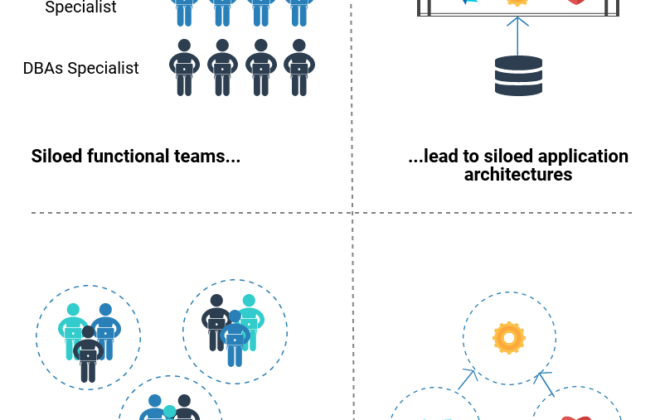CRM: systematization or automation?
Did you write cheat sheets at school? Surely yes. Probably, they noticed that some spurs were a monolithic rewriting of a textbook, while others were real clues: I opened it, grabbed the diagrams, lists, paragraphs with my eye, and quickly removed it because the information is ideally organized. Such was written by those rare excellent students who are not pulled by the ears and do not cramp, and strong, good ones with an understanding of themselves in training – this was their insurance, if you like, a sedative. Moreover, while you process, format, and present information in this way, you learn the subject forever. That was the real systematization.
And now the question: has the cheating process become automated with the advent of convenient mobile phones? What do you think? Formally – yes: human labor is minimized, information is transmitted by a machine, the process has a high speed, technologies are involved, the labor intensity of operations is reduced to almost zero. But, on the other hand, the information in the electronic cheat sheet was created by some person, and then the process of creating unlimited copies was simply launched. It turns out automation in part, and even with a negative connotation – it deprives a person of the opportunity to obtain minimal knowledge and works only on the target “KPI”, ie. assessment. Isn’t it a bit like some formal office processes that are aimed at some imaginary goals and key indicators from the ceiling?
Often, discussions on Habré, on social networks, on specialized platforms, and in closed groups boil down to a discussion of the fact that a CRM system is not about automation, because it itself cannot work for an employee and he, the poor thing, needs to fill out customer cards himself with a bunch of fields, reference books, various working entities of the program, etc. The trouble and nothing else – everyone thought that CRM would work for employees, and she didn’t even bend her fingers. Huh?
Systematization and automation: drawing a clear boundary
Systematization is the process of developing operational standards (a set of templates, procedures, rules, instructions, etc.), which will ensure the consistency of employees’ actions and the effectiveness of the company as a whole. Systematization can take place both in manual mode on paper and in special web applications (miro, mind maps, etc.) or in specialized programs such as CRM systems.
The task of systematization is to include all functions of employees in a single system, to organize information according to a plan, algorithm, or scheme.
Automation is a form of organizing and passing a process when the machine plays a leading role, and human efforts and the human factor are minimized. Automation, in contrast to systematization, presupposes a strict condition for the presence of a robotic system: hardware or software.
Automation and systematization are closely related: the correct implementation of automation tools is necessarily preceded by a thorough systematization, which prepares the ground for the start of automatic actions and processes. Simply put, a person must understand very well what he is doing and what result he is counting on – only then will he be able to draw up the correct instructions for the automatic system.
Why is systematization cool?
Any implementation of CRM, ERP, PM, etc. is worth starting with the systematization of functions, processes, information in the company.
Yes, these tasks will require both time and effort, and to a certain extent nerves – but the documented, well-written algorithms of work in the company are worth absolutely all the efforts that are put into them by the manager and employees. Especially the stage of systematization is important for small businesses because it is he who is often characterized by spontaneous business management.
First of all, systematization is cost reduction. No, this does not mean that the costs in the balance sheet will decrease immediately after the installation of the CRM system, it means that employees will be focused on priority tasks, and not on those that take time and reduce labor efficiency (and therefore the efficiency of wages) … The effect is not felt immediately, but gradually, but it is more stable and positive than, for example, the result of the usual cuts, cut costs, and other emergency and not very reasonable measures.
The increase in labor productivity and employee efficiency is also a direct consequence of systematization. In the process of primary systematization, all unnecessary steps are eliminated and you can immediately see where the resources are “merged” and how they can be optimized. Employees, knowing a clear algorithm of actions and the place where the necessary information “lies”, can not waste time reorganizing each task anew – their mind, time and energy can be directed to integral projects, company development, and strategy.
Well, about the pleasant side effects: the systematization of information, functions, and processes makes communication within the company comfortable. Accurate algorithms and procedures significantly reduce misunderstandings and endless arguments about how to solve a particular problem or where to start a project phase almost completely disappear within the company. Looking ahead, I will say that subsequent automation further reduces the risks of shifting responsibility and missed deadlines – smart automation perfectly logs who, when, and what did and on whom the process was “stuck”.
How is the systematization going?
In fact, systematization using CRM (or any software for business) transfers the entire set of operational information of the company into a single database. Speaking of information, I mean here data, and descriptions of functions, and algorithms of processes, and calendars, and schedules, and other attributes of operational work.
Determine which tasks need to be optimized and streamlined first and why it is so important to you. At this stage, some company owners refuse to work within the team and invite outside consultants to look at the business from the outside. But this is a fundamentally wrong decision: no one is better than a manager and employees immersed in the company. If you want to look from the outside, ask the departments to refactor each other’s processes – firstly, it is effective, and secondly, employees are not ashamed of a stranger and tell their people what they think and analyze, and not what will make them look good …
Please note that task optimization and process refactoring are not always aimed at increasing revenue – they may be about saving time or eliminating any conflict situation. Describe the tasks (functions) and their parameters. This will be the basis for systematization, the basis of all operational work.
The next step is to document all functions and processes, and then test them according to the described scheme. Thus, it will be possible to identify all inaccuracies and problems and at the same time collect information about the approximate duration of the stages of the processes and triggers that help to move from stage to stage. As a result, you will have a monolithic process that you can already automate with peace of mind.
And yes, never be afraid to make a mistake – it’s never too late to refactor the process and make changes.
This kind of systematization allows you to get rid of the mess in operational work, understand what the team is actually doing and identify new points of growth. In turn, employees will not only be able to cover the activities of the company as a whole but will also feel involved in something fundamental and important. And, being the authors of all processes and functions, they will treat them with respect, that is, follow the developed regulations and algorithms. From the point of view of personnel management and team building, the process of systematization is a very valuable activity.
When will we automate?
Unlike systematization, automation eliminates the human factor, shifts tasks to a smart machine or program. It can be partial or complete, but it always greatly facilitates human labor. For example, in the course of systematization, employees spent some time filling out reference books in CRM, create templates for contracts and documents, enter customer data, etc. After that, they can take advantage of automation: over and over again reuse data, start processes, generate documents, send mailings, conduct analytics using the program, that is, as quickly as possible. It turns out exactly as in the famous cartoon: it is better to lose one day, than to fly in five minutes (and fly day after day). Manual work is minimized and employees complete their tasks much faster.
So, summing up under a little discussion about systematization and automation, we will draw several conclusions:
- systematization is an independent important process in a company that solves many problems
- automation is much more efficient if it is preceded by systematization
- automation by itself, without preparation, may turn out to be ineffective (it is worth remembering the imperishable phrase of CRM-specialists that the automation of a mess gives an automated mess)
- systematization for employees is a less painful and more interesting process than automation
- systematization gives a tangible result, after which automation is perceived easier, and implementation is better.
Alas, there is basically no magic in automation, CRM, or software. These are the usual workflows and tools that bring speed and convenience to the company. Therefore, you should not expect that the CRM system itself will be filled with data or that reference books will appear from nowhere – painstaking work is always at the heart of the implementation. But then – only sheer pleasure from the speed of flight!
Related Posts
Leave a Reply Cancel reply
Service
Categories
- DEVELOPMENT (104)
- DEVOPS (53)
- FRAMEWORKS (27)
- IT (25)
- QA (14)
- SECURITY (14)
- SOFTWARE (13)
- UI/UX (6)
- Uncategorized (8)





